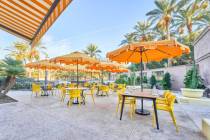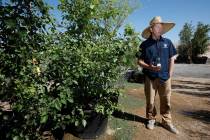A Street of Hidden Gems
Walking through Shanghai Plaza, on Spring Mountain Road near Arville Street, it’s easy to lose track of the dining options. A Korean corn dog restaurant sits just a few doors down from a dessert store offering ube, matcha and black sesame soft-serve in fish-shaped waffle cones. A bit farther, you’ll pass a tea house, a Malaysian restaurant, two noodle shops, a Vietnamese eatery and a pair of Chinese restaurants among the storefronts of this two-story retail complex, which has become a popular day trip for guests of nearby Strip casinos.
“Tomorrow morning, by 10 or 11 o’clock in the morning, there will be about 12 limousines dropping off tourists,” says Joe Muscaglione, a partner in one of those Chinese eateries, Shanghai Taste, and one of the creators of the chinatownvegas.com website.
The stretch of Spring Mountain Road just west of the Strip has arguably become one of Las Vegas’ top dining destinations, attracting locals and tourists alike. Many still refer to the area as Chinatown — a nickname that dates to the 1995 opening of the Chinatown Plaza shopping center, which stretches from Valley View Boulevard to Arville on the south side of the road. But that nickname fails to do justice to the variety of cuisines represented in the region.
“It is called Chinatown, but it’s really Asia-town,” says Sonny Vinuya, president of the Las Vegas Asian Chamber of Commerce. “If you want Thai food, Japanese, if you want Filipino or Vietnamese, it’s in there. There’s a little bit of everything.”
And in recent years, those offerings have expanded beyond the Asian diaspora. “Spring Mountain is like a street of hidden gems,” says Nicolas Kalpokdjian, managing partner of the French fine dining restaurant Partage. “From Italian to French, or very specific types of Asian food, I think that Spring Mountain is an amazing resource, because there’s so many different kinds of eating.”
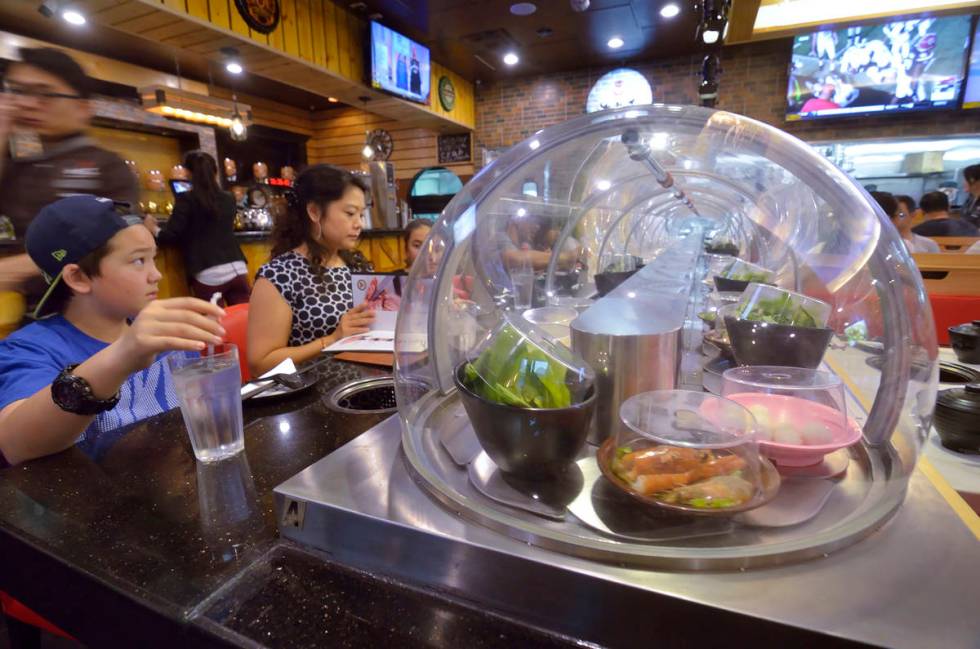
A foodie destination
Kalpokdjian need only point to his neighbors in the sprawling Center at Spring Mountain shopping complex to prove his point. They include a Japanese izakaya, a Mexican restaurant, sushi and ramen spots, multiple Chinese restaurants, a Cajun crawfish joint and a nationally acclaimed tiki bar.
“This is kind of the entree to off-Strip dining,” says chef Marc Marrone, who was preparing to open a German doner kebab restaurant in that same plaza this summer. “It’s still close enough to the hotels on the Strip where a tourist isn’t getting in a cab for 30 minutes with no idea where they’re going, for some restaurant they’ve heard is good. This is kind of a more approachable venture off the Strip for tourists. Plus, a lot of industry folks who go down to the Strip to visit some friends at a nightclub or a bar, on the way home, stop on Spring Mountain for a bite.”
Chef Khai Vu, who operates the popular pan-Asian restaurant District One Kitchen and Bar on Jones Boulevard just north of Spring Mountain, began working in the neighborhood in 1994 at his family’s Vietnamese restaurant, Pho So One. Like many of the families operating Asian restaurants in the area during the ’90s, they were recent immigrants to the U.S. with a connection to Asian restaurants in California.
In those days, the customer base was 70 percent locals and about 30 percent L.A. tourists. On holidays, however, that ratio would change dramatically, as more California visitors flocked to the area.
“Any big weekend, it was 90 percent tourists — mainly Asian, from L.A. or the San Francisco Bay Area,” Vu recalls.
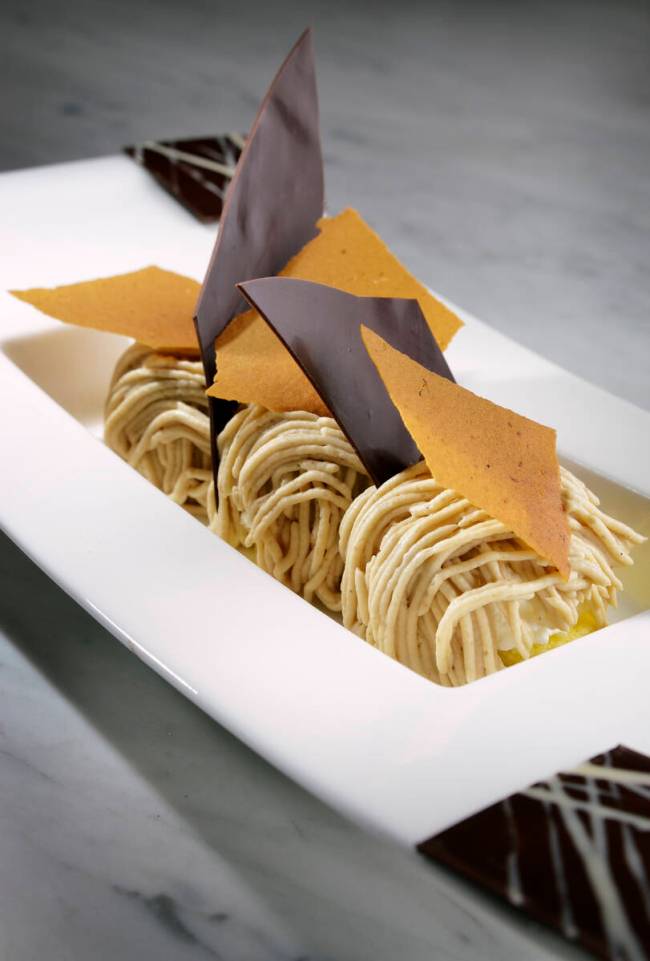
The opening of Chinatown Plaza helped establish an identity for the neighborhood, even if the Sinocentric label didn’t fully reflect the variety of Asian restaurants and businesses on the street. In 1999, Gov. Kenny Guinn made it official, bestowing the Chinatown moniker on the stretch of Spring Mountain from Las Vegas to Rainbow boulevards.
The restaurants along that corridor have been popular stops for tour buses ever since, most frequently those that cater to Asians and Asian Americans. It was a Japanese robata grill, however, that finally put Las Vegas’ Chinatown on the national map of foodie destinations.
“When you talk about higher-end dining, Raku was the first to start bringing in really fantastic ingredients and start pushing it stylistically with the food,” says chef Brian Howard, whose award-winning modern American restaurant Sparrow + Wolf opened on Spring Mountain near Arville in 2017.
‘He was so lonely’
He’s referring to Aburiya Raku, a small restaurant specializing in robata-grilled skewers that opened on Spring Mountain in 2008. Thirteen years later, it remains a must-visit destination for vacationing foodies and has earned its chef-owner, Mitsuo Endo, multiple James Beard Award nominations.
“I wanted to open a restaurant right here just because it’s not too far from the Strip,” Endo explained through a translator during a recent interview in the restaurant, noting that there weren’t a lot of Japanese restaurants in the neighborhood when he moved to Las Vegas in 2007.
“I wanted the chefs and workers and employees from the hotels, after work when they get off, to come to eat, and for them to have fun,” he says.
Raku’s popularity among local food and beverage workers and the national culinary media inspired several other innovative Japanese restaurants to open their doors in the same shopping center, including Las Vegas’ first serious ramen bar, a sushi experience more luxurious than any on the Strip, a Tokyo-style Italian concept and a Japanese curry house. (“He invited them to come to this strip mall (because) he was so lonely,” Endo’s translator says, laughing.) Despite their success, it was still nearly a decade before Howard decided to roll the dice on a chef-driven restaurant just a half-mile to the east that wasn’t tied to any specific culinary cultures.
“I’ve been dining on Spring Mountain Road for 20 years, and that’s kind of what drew me to putting Sparrow + Wolf on that street,” Howard explains. “I knew that there were no barriers when it came to ingredients or stylistically. There was no catering to a tourist crowd.”
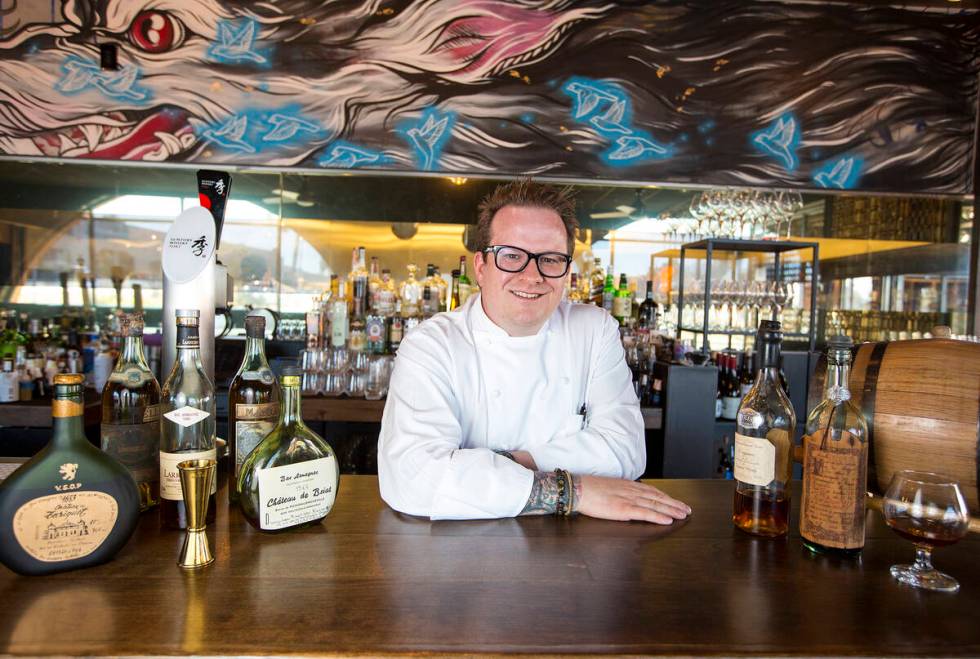
‘A cultural mix’
His bold and eclectic menu drew on influences from around the globe — some Asian, many non-Asian. And its near-immediate success among locals, tourists, foodies and industry pros, along with a boatload of awards and accolades, proved once and for all that Spring Mountain had become a culinary hot spot that defies ethnic limitations.
“Sparrow + Wolf paved the way for more (types of) restaurants in this area,” says Kalpokdjian, explaining that Howard’s success made him feel comfortable bringing high-end French cuisine to the neighborhood.
Roberto Liendo, who opened the Spanish restaurant Edo in the area around the same time Partage debuted, agrees that Sparrow + Wolf was a game changer.
“I think people have completely changed their view about (the area),” he says. “They feel that Chinatown is the place to go for other types of cuisine and is just a cultural mix.”
“We have that diversity, and it’s all different ethnic cuisines,” Vu says. “There are a lot of things to offer, not just Asian food. And I think that it should be an international destination for culinary adventures.”
As a result, Vu says District One draws a customer base that includes “a little bit of everyone,” a sentiment echoed by most of the restaurateurs interviewed for this story.
Muscaglione says the end result is a Chinatown that’s among the best, and most diverse, in the nation.
“If you go to Chinatown in Chicago, it’s more Vietnamese than anything else. If you go to Chinatown in L.A., it’s almost all Cambodian now. Chinatown in San Francisco, we dwarf them. They only have 132 restaurants; we’re over 150 here.”
And, he points, out, that count is growing.






